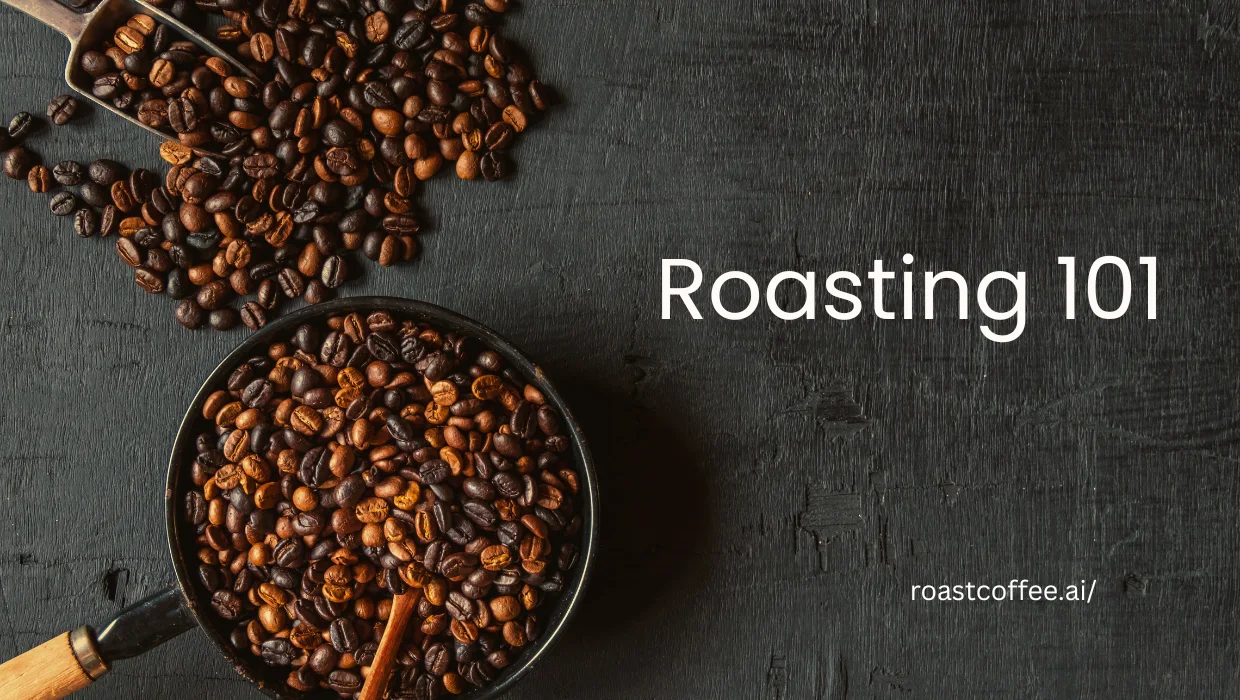Know Your Coffee Green Beans: Java Estate
Welcome back to the heart of coffee! In this post, we’re diving into an Indonesian classic: Java Estate. This region is a cornerstone of specialty coffee, celebrated for its unique processing method and its reputation for producing a distinctively full-bodied and complex cup. Java Estate coffees are the epitome of a syrupy, heavy-bodied, and low-acidity brew, showcasing a delightful blend of chocolate, spice, and herbal notes that are both comforting and unique.
🌍 Where It Is Grown
Java is a major coffee-producing island in Indonesia. The name “Java Estate” refers to coffee grown on one of the large, government-run estates, which were established during the Dutch colonial period. These estates are known for their high-quality, meticulously processed coffee, which is a stark contrast to the smallholder-farmed coffees of neighboring islands. The coffee here is grown on large, well-managed plantations.
- Varietals & Growing Conditions: The primary varietals are Arabica varieties like Typica, S-795, and some local hybrids.
- Soil: The region is characterized by rich, volcanic soils, which provide excellent nutrients for the coffee plants.
- Microclimate: The tropical climate with consistent rainfall and high humidity creates ideal conditions for coffee cultivation. The beans mature slowly, allowing for the development of complex sugars.
- Altitude: 1,100 to 1,600 meters. The high altitude results in a slower maturation of the coffee cherries, leading to denser beans with more complex flavors.
- Sustainability: Java estates have a long history of sustainable practices, with many of them being certified organic and/or Fair Trade. They are committed to environmental stewardship and social responsibility.
☕ What It Tastes Like
Java Estate is famous for its heavy body, mild acidity, and unique flavor profile. It’s a coffee that offers a consistently bold and complex experience.
- Expect a full, heavy body with a syrupy mouthfeel.
- The acidity is typically mild, which is a key characteristic that makes this coffee so versatile and easy to drink.
- The body is heavy, providing a rich and smooth mouthfeel.
Common notes include dark chocolate, licorice, tobacco, and earthy/herbal undertones. You may also find hints of tropical fruit or spice, with a long, complex finish.
💰 Market / Price Insights
- Pricing: As a high-quality, specialty coffee with a unique flavor profile, Java Estate commands a solid price on the market. Its distinct characteristics and processing method add value and appeal for roasters and consumers who are looking for something different from the typical bright and clean coffees.
- Sustainability Efforts: The Indonesian coffee industry, particularly in Java, is working on improving sustainability. Cooperatives and farmers are increasingly investing in better processing methods and certifications to meet global demand for ethically and environmentally sourced coffee.
💧 Processing Method
The most common and traditional method for Java Estate is the washed (or wet) process, which is a key factor in its heavy body and earthy flavor profile.
- Washed Process: After being hand-picked, the ripe coffee cherries have their outer skin and pulp removed. The beans are then fermented in water to remove the sticky mucilage. This process is carefully monitored to ensure a clean, consistent flavor. The beans are then washed and dried, often on patios or in solar dryers.
- Flavor Differences: The washed process enhances the natural characteristics of the bean, giving it a cleaner finish and a more defined flavor profile. While some producers are also experimenting with Honey and Natural processing, the washed method remains the standard for showcasing the classic Java Estate profile.
🔥 How to Roast It
Roasting Java Estate is a satisfying experience due to its unique characteristics. It is a forgiving bean that holds up well to darker roasts.
- For Beginners: A medium-dark roast is the ideal starting point. This roast level will develop the coffee’s prominent dark chocolate and earthy notes while preserving a balanced sweetness. The beans will develop a rich color and a slightly oily sheen.
- For Advanced Roasters: You can push the roast to a darker level to develop a richer, more robust flavor, or keep it on the medium side to highlight its subtle herbal and spicy notes. Its consistency makes it easy to achieve a predictable and repeatable roast profile.
💡 Post Roasting Requirement
Allow the roasted beans to rest for at least 3-5 days. This degassing period is crucial for the coffee’s flavor to fully develop and for its distinctive heavy body to settle into a rich, cohesive cup.
Store the beans in a cool, dark place in an airtight container to maintain freshness.
😋 Flavor Profile / Tasting Notes
- Cupping Descriptors: When cupping a washed Java Estate, expect a complex aroma of earthy, spicy, and dark chocolate notes. The taste profile is a unique mix of dark chocolate, tobacco, and subtle herbal undertones. The finish is long, complex, and satisfying.
- Comparisons: Its heavy body and mild acidity make it a great alternative to the typical bright and clean coffees. It’s often compared to a classic, bold, and rustic cup of coffee that is consistently reliable and delicious.
☕ Brewing Recommendations
To get the most out of Java Estate’s heavy body and complex flavor, choose brew methods that highlight its richness.
- French Press: The perfect method for a consistently delicious and easy-to-make cup that accentuates the coffee’s heavy body and rich flavors.
- Drip Coffee Maker: This method can also be used to create a consistently delicious and easy-to-make cup.
- Espresso: Its mild acidity and heavy body make it a fantastic base for espresso, providing a creamy body and a chocolatey crema.
A Legacy of Unique Processing
While Java may not have a single famous legend like Kaldi, the story of coffee in Java is a testament to the power of a unique processing method. The washed process, developed out of necessity and tradition, has become the region’s signature, setting its coffees apart from the rest of the world.
The cooperatives and smallholder farmers in Java are working to not only preserve this unique process but also to improve quality and consistency. They are a driving force behind this success, ensuring that Java Estate remains a beloved and sought-after coffee.
So, while not as famously named as some other regions, the story of Java Estate is one of dedication, a unique processing method, and a commitment to producing one of the world’s most beloved and distinctive coffees.
❓ FAQs
Q: Why is Java Estate coffee so low in acidity?
A: The unique wet-hulled (Giling Basah) processing method significantly contributes to the coffee’s low acidity, heavy body, and earthy notes.
Q: Is Java Estate coffee a good choice for espresso?
A: Yes, its mild acidity and heavy body make it an excellent choice for espresso, providing a rich, creamy, and complex shot.
Q: Where can I buy green Java Estate beans?
A: Reputable green coffee suppliers like Sweet Marias, Royal Coffee, and Genuine Origin often carry high-quality Java Estate beans.
So, go ahead and explore this exquisite coffee. Its unique flavors and consistent quality are a testament to the dedication of Javanese coffee farmers.
Until the next sip, keep exploring the world of coffee. Explore our roasting tips, or read about another gem in our “Know Your Coffee Green Beans” series!


